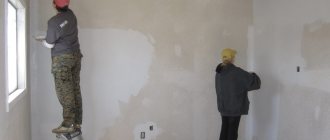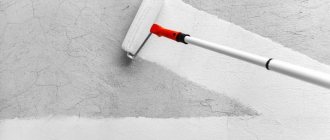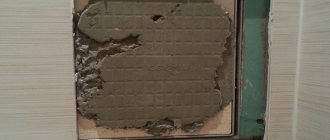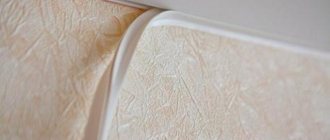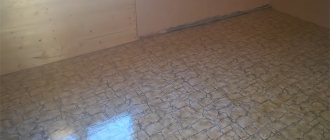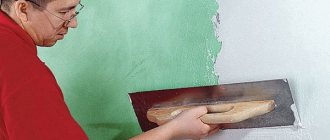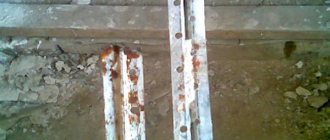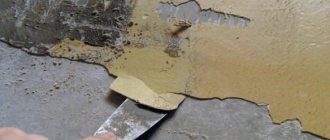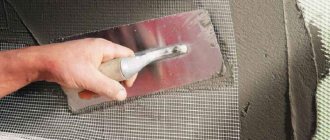Which tiles need to be soaked?
Floor finishes are made from a wide variety of materials. Different glues can be used for it.
If you have chosen baked clay tiles for the floor, then you definitely need to soak them. The fact is that it absorbs water well and cement may lose its plasticity. If tiles are laid with a cement-based adhesive, they must also be immersed in water before use. This helps to apply the adhesive more economically.
When tiles are laid on the floor, the surface is first primed. Experts disagree. Some say that the tiles do not need to be wet, but only washed and dried, others say that they need to be soaked for a long time. Porcelain tiles, metlakh tiles, glass, mosaics and so on should not be soaked, as they do not absorb moisture at all.
Preparing porcelain tiles for installation
Regular ceramic tiles are often soaked in water before installation. It is believed that this way it will hold up better. There is no point in soaking porcelain tiles. This finishing material does not absorb water at all. That is why the glue for its installation must be special.
Ordinary cement will be completely useless when laying porcelain stoneware. It is not able to hold heavy large-format tiles. The characteristics of the material and the technology for installing porcelain tiles require the use of exclusively special adhesive mixtures with polymer additives. You can read a detailed article on how to choose them here.
Before installation, the back surface of porcelain tiles must be cleaned of any contamination, especially dust.
How does the soaking process work?
- Moisten the products with artesian water.
- Do not soak ceramics in dirty water (this will cause mold and contamination).
- Immerse in water for 15-20 seconds.
- Then they lean the tiles against the floor, after wiping them dry.
Important! Do not overdo it, as a water film may form on the tiles. Then, instead of sticking, it will bounce off the surface.
The material is properly wetted when bubbles no longer appear on the surface of the water.
When not to do it
In some cases, tiles do not need water.
If you use glue such as:
- liquid Nails,
- silicone composition,
- epoxy tile adhesive (for example, for porcelain tiles).
Many experienced tilers agree that moistened tiles are easier to cut. The seam is more even.
In what other cases should ceramics be wetted?
If the tile absorbs moisture too quickly, it should be moistened. If the glue dries quickly, then it is also better to moisten it. You can lightly saturate it with water by wiping it 3-4 times with a damp sponge. There is an opinion that before laying tiles, you need to wipe them dry.
Important! There are craftsmen who suggest soaking the tiles for a long time before laying them, for example overnight. Moreover, to begin with, you can soak only a few copies of the tile to be sure that no stains will appear on it.
Why do some craftsmen wet the tiles before laying and is it necessary to do this?
Ceramic tiles have become a common element in the interior design of kitchens, bathrooms and other rooms with high humidity.
She is good at finishing not only the walls, but also the floor. Laying tiles is not too complicated a process to call in a professional. You can do all the work yourself. You just need to do some preparatory work and select the right materials for repairs.
In this article we will talk about laying ceramic tiles on the floor and walls with our own hands, give step-by-step instructions, as well as video and photo materials.
Preliminary work
Removing old tiles
Before laying ceramic tiles, you need to clean the room.
Preparing for a bathroom renovation
- All furniture is removed from the bathroom or kitchen.
- If you plan to finish the walls completely, then you need to remove mirrors and other objects from them. It is also better to remove the washbasin.
- After the room is cleared of plumbing fixtures and mirrors, it is necessary to assess the scale of work on the walls.
- If there are already old tiles on the walls, then you can take a chance and stick the tiles directly on it. However, in this case, there is always a possibility that the glue will not withstand the excess weight, and the repair will go down the drain. It is better to dismantle the old tiles.
- In order to remove the remains of the old tile, you need to prepare a chisel. The tiles are carefully chipped.
- After the surface is cleared of tiles, it is necessary to remove the remnants of old glue and other coatings from it.
- For new tiles to last a long time, the walls must be smooth and without deviations. The same applies to the floor, where you can also install tiles. Using a level, you must also determine the slope of the walls.
- If there is an unacceptable level of slope, the situation must be corrected using special mixtures. The mixture begins to be applied from the place where the greatest slope is. The surface should dry after treatment. To avoid problems with drying, you need to lay the composition in a layer not exceeding 1.5 - 2 cm. In modern houses, the slope of the walls is usually not very large, so there should not be any problems.
Wetting process
To make the work easier, craftsmen advise moistening the tiles. Wet material is easier to place and press into place. It is important to dip in a small amount of liquid. Otherwise it will be difficult to correct. When installing on a concrete wall, a little water is required.
It will slow down the setting of the tiles to the wall on which the glue is placed. This is enough to correct the position of the covering material, which only needs to be moistened for about a minute. Use clean water.
Liquid from reservoirs will cause bacterial damage to the tiles and lead to the formation of fungus.
New publications are published daily on our channel in Yandex.Zen Go to Yandex.Zen.
Tile selection
Choosing ceramic tiles
Tile has certain characteristics that distinguish one type of tile from another.
Sometimes the owner finds out after the purchase that the tiles he has are not at all intended for the room in which the renovation is being carried out.
Even if you install such a tile, it will very quickly lose its strength and original properties. Therefore, laying ceramic tiles begins with the correct choice of material, which takes into account all the details.
Species and types
The following characteristics of tiles are distinguished:
- Relief. This indicator seems unimportant, but only at first glance. The relief of the tile, as well as the roughness of the surface, can save you from falling. If the tiles are laid on the floor of a bathroom or bathhouse, then it is better to choose a product not with a smooth surface, but with a relief.
- Shape, size, color and patterns. The color and presence of patterns will affect how harmoniously the tile will fit into the existing design of the room and apartment as a whole. Using color you can even visually change the size of a room or kitchen. When choosing tiles of a certain shape, you must take into account that small rooms require small tiles.
- Abrasion. The tiles have 5 abrasion classes, with the fifth being the highest. When choosing, you should not focus on the most difficult to wear tile products. It is better to ask a sales consultant which tile is suitable for a particular case.
- In addition to abrasion, there is another important indicator - moisture absorption. The characteristic has 4 classes. When purchasing, you must remember that for wet rooms you need tiles with the lowest level of moisture absorption. This applies to places such as the bathroom, bathhouse and, partly, the kitchen.
What water to soak
We think that the question of whether it is necessary to wet the tiles before laying has been completely disassembled, now we will look at another important question, and what kind of water should be used for this soaking.
Everyone has probably heard that the use of unclean water, technical or from a reservoir, will lead to bacterial infection of the adhesive material and it will eventually bloom, regardless of whether it was resistant to fungi and bacteria.
The water used must be clean, artesian water, and the container in which the glue is mixed must be clean according to construction standards.
We remind you that a professional builder keeps his tools clean and thoroughly washes all containers after each repair job. This simple principle will help you easily decide on the construction team that will carry out your repairs and tile installation.
The water must be clean, washing powder should not be used, after drying it forms a film that will have a bad effect on adhesion
But even this team needs to be provided with access to clean water; you provide this help primarily to yourself, as you save your premises from unpleasant surprises.
To summarize, professional craftsmen know that thin ceramic tiles require a soaking process, while for all other tiles the wet cleaning principle applies. Beginning craftsmen should also adhere to this principle, and then the reliability of the repair will be at a high level.
When laying ceramic tiles, many novice DIYers wonder whether they need to soak the tiles before laying. When laying ceramic tiles, many novice DIYers wonder whether they need to soak the tiles before laying.
Most professional craftsmen agree that when laying ceramic tiles using modern types of glue, pre-soaking is not required, since modern glue already has good adhesive qualities.
But if you plan to lay ceramic tiles with cement mortar, it is advisable to first soak them by placing them in a container with water for a short time; immediately before laying the tiles, you need to let them dry a little so that there is no water film on the surface of the tiles.
Soaking allows the tiles to move for a longer period of time during installation; wet tiles do not immediately absorb all the moisture from the mortar, which allows for better adhesion of the tiles to the surface.
On the floor
Laying tiles from the corner
After completing the preparatory work, you can begin the actual installation of the tiles. To work, you need to prepare the following tool:
- Master OK;
- notched spatula;
- trowel;
- small (up to 40 cm) and medium (up to 80 cm) level;
- plumb line;
- rubber hammer;
- container for mixing glue;
- drill with mixer attachment;
- latex gloves;
- tile cutter;
- grinder with a circle on granite;
- crosses for forming a seam;
- damp cloth;
- diamond-coated crown;
- pliers.
This set of tools is also necessary for laying ceramic tiles on the wall.
Source: https://KupitFaneru.ru/materialy/nuzhno-li-mochit-keramicheskuyu-plitku-pered-ukladkoj-2.html
Features of laying floor tiles
Today you can choose any floor tile. The range is very wide. It is best to use a corrugated surface for the floor. Glossy is dangerous because it is slippery. You can calculate material consumption using a special automatic program.
The same applies to the amount of glue. Before laying, a screed is applied to the floor. Work starts from the middle of the room. The tile is laid on glue. After installation, it is necessary to grout and leave the floor to dry for a day.
Thus, thin tiles are wiped with a damp sponge, thick tiles are soaked for a long time, porcelain tiles do not need to be soaked.
Recommendations on how to soak tiles before laying
Tile today is a well-studied material, which comes with extensive installation instructions. Quite often missed in these recommendations is the question of whether the tiles need to be wetted before laying or not.
If there are no notices in this regard on the back of the box, then you will have to make the decision to soak the tiles before laying and how to do it yourself.
Let's list the main characteristics of the tiles that require soaking and under what conditions.
Type of material
Soaking large-format tiles will require a large container, but sometimes this work is not necessary. Let's figure out when the tile requires it
Ceramic tile:
- Red clay;
- White clay;
- Porcelain tiles.
Red clay tiles, like the one in this photo, need to be soaked. The material is very porous and soaking will give additional strength to the material.
The first two materials, provided that they are single-firing and glazed tiles, require additional processing of the tiles before laying, namely soaking, if they are laid on a cement mixture. Other types of adhesives, such as two-component adhesives or liquid nails, do not require such preparation of the tiles before laying.
This condition applies if the thickness of the tiles is more than 10 mm; for “shards”, tiles less than 10 mm, it is best to simply rinse with water before laying. This tile has a high degree of moisture absorption and extra water before installation will benefit it. In this case, the gluing time will be significantly longer than when laying tiles larger than 10 mm.
Porcelain tiles are a reliable material and easy to install and operate.
Conditions under which tiles need to be soaked
It is important to understand that tile can be conditionally called a pure material. It is most often stored in cold warehouses or open areas. He often travels a long distance to the installation site, and then simply waits for his turn for days or weeks, surrounded by all the repair work.
And what do you think, is it necessary to soak the tiles before laying them after such storage? In this case, we are talking about basic cleaning of the material; you need to make sure that the material is slightly contaminated and simply rinse with running water. Everything is quite simple, take a tile and just put it under running water.
Then immediately begin laying the tiles, without having to wait for the material to dry.
An adhesive mixture that is too dry can lead to poor installation, but a well-wetted tile can smooth the situation out, which will create adhesion. In any case, the best option would be a properly prepared adhesive composition
Glaze as protection
Of course, you need to adequately approach the question of whether to soak the tiles before laying. There is material that, when soaked, can behave quite unpredictably. This material is called glazed tiles and tiles.
It has one feature: on the one hand, the glaze protects the material from moisture, and on the other hand, it does not allow excess moisture to evaporate from the material. And if the material is very thin or has significant porosity, then stains will appear under the glaze from moisture and it will no longer be possible to get rid of them.
Should the tiles be wetted before laying in this case and how, if necessary. It is advisable to soak such tiles, but first take one and place it in a container of water. Wait a couple of hours, then remove and dry.
If stains do not appear, then you can soak the entire batch for installation, and leave this specimen for use in an area that will then be hidden or for trimming.
Black spots may appear under the glaze after soaking, this is especially noticeable on white tiles
Floor or wall
You already know that you need to wet the tiles before laying them on the wall to make it easier to move them and level the material. And in the case of a floor, when dry layout is done, and modern marking devices are used for laying, the possibility of error is, in principle, impossible. Yes, in this case the decision depends on the type of material.
Floor tiles adhere well to the base due to their own weight, but nevertheless, dust must be cleaned from them in any case
Porcelain tiles, which are now most often used for floor installation, can simply be wiped off with a damp sponge and do nothing else.
During this operation, the sponge is not wetted abundantly; it is enough if it is simply damp. After each tile, the sponge should be rinsed so as not to add new dust.
Thin ceramic tiles need to be soaked to make them stick better; thick ceramic tiles can be cleaned in the same way as cleaning porcelain tiles.
Porcelain tiles do not require immersion in water, but there must be enough adhesive and it should not be dry. Or what awaits you is that the tiles will simply fall off and the repair will have to start all over again
Exceptions
No tiles need to be soaked if they are installed using the following types of adhesive:
- Silicone;
- "Liquid Nails";
- Mastic.
The tiles do not need to be soaked before cutting; a clearer cut will not be achieved.
